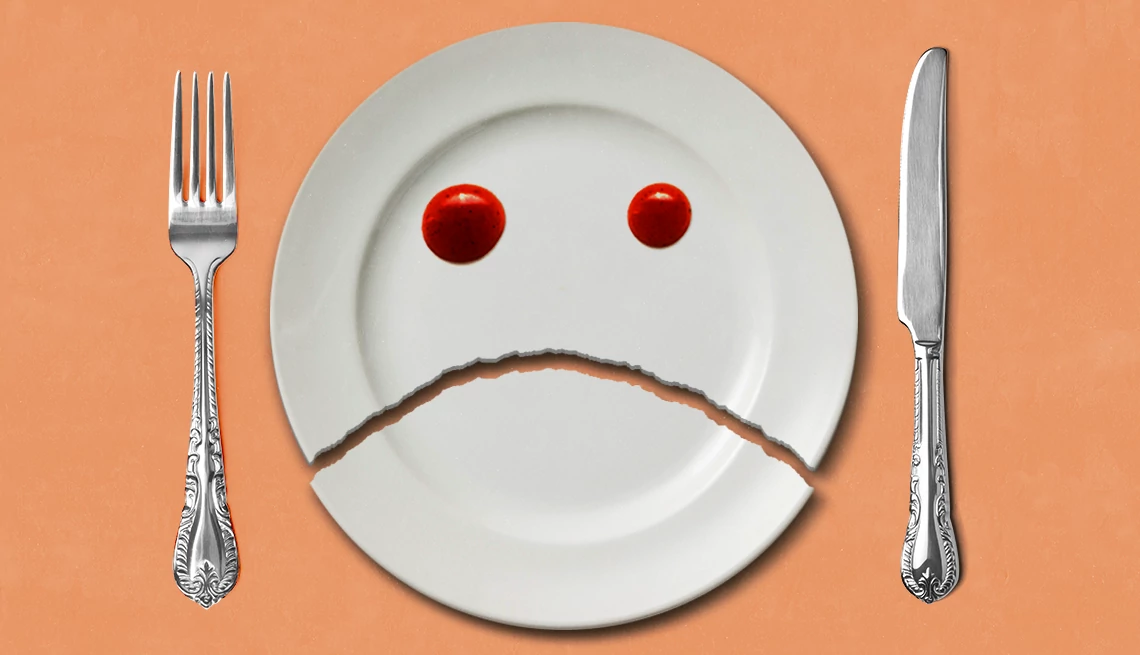- Select a language for the TTS:
- UK English Female
- UK English Male
- US English Female
- US English Male
- Australian Female
- Australian Male
- Language selected: (auto detect) - EN
Play all audios:
The woman rushed to her 58-year-old brother’s room when the shouting started. She found him lying in his bed, screaming, his entire body thrashing. He’d been acting strange for a few months,
but she had never seen anything like this, and it scared her. She picked up the phone and called 911. Her brother had started seeing a psychiatrist, Dr. Douglas Berv, a few months earlier;
he worried that he might be going a little crazy. Initially, Berv wasn’t sure what to think. The patient seemed tidy and organized. He had a full-time job that he enjoyed. And yet he
described periods of confusion. That wasn’t normal for him, he explained at their first meeting. He had always been a sharp guy, and yet just the night before he got lost driving home from
work. He came to an intersection he knew well — he’d driven the same route every day for years — but somehow he couldn’t remember if he was supposed to turn right or left. And it wasn’t just
getting lost that concerned him. He was having strange dreams, and when he woke up he was drenched in sweat. “But I also have these chills,” he told Berv. Even in a warm room, he would
suddenly feel a cold that seemed to come from inside himself. “I’m having one now,” he said, pulling back his sleeve to show the doctor the goose bumps on his arms. Berv could see the hair
standing straight up. The patient had already seen his internist, who hadn’t found anything wrong. Was it all in his head? By the end of their first appointment, Berv was pretty sure it
wasn’t. Confusion like the patient described isn’t a common psychiatric complaint. And he witnessed the strange chills himself. This may well be a medical problem, Berv told the patient. He
called the man’s doctor to suggest he be evaluated by a neurologist. A VERY STRANGE THANKSGIVING He never got to that specialist. His siblings mostly lived in the Northeast and spoke
frequently by phone but only got together as a group on holidays when they returned to the house on Long Island where they spent summers growing up. As the family gathered there for
Thanksgiving, the man’s two brothers and five sisters noticed a difference. He was normally reserved, but with a wicked sense of humor; at that visit he seemed strangely flat. And
occasionally his face would distort into a crazy grimace on one side. When his older brother asked him about it, he seemed completely unaware it was happening. And then came Thanksgiving
morning. Their brother had always been meticulous about his clothing, but that morning he came to the breakfast table wearing only his underpants. One of his sisters laughed, thinking it was
a joke. His older brother was not amused. “What are you doing?” he asked his brother sharply. He didn’t want to miss breakfast, the man answered, then retreated to his room, returning a
short time later fully dressed. First thing the next morning, his brother and sister took him to a local emergency room. He was kept overnight and seen by many specialists. A dozen tubes of
blood were sent to the lab, along with fluid obtained from a spinal tap. All the results were normal, the family was told, but some of the specialized tests were sent to other labs and would
take a while to come back. He was discharged, and the rest of the weekend was uneventful. A few weeks later the older brother got a call from a neurologist who had seen their brother after
his E.R. visit. One of the tests sent by the hospital was positive. It looked as if his brother may have Creutzfeldt-Jakob disease (C.J.D.), a rapidly progressive neurodegenerative disease
that is usually fatal within a year of diagnosis. Shocked by this terrible news, the brother could barely croak out, “Are you sure?” “I’m 95 percent positive,” the neurologist said. NO
TREATMENT, NO CURE C.J.D. is thought to be caused by prions, abnormal, destructive agents that damage the brain by triggering specific proteins to fold incorrectly. When this disease is
caused by eating meat from an infected animal, it’s informally known as mad cow disease. The most common symptoms of C.J.D. are a rapidly progressive dementia and strange body movement —
most commonly myoclonic jerks. All of us have experienced myoclonic jerks. They usually occur as we are going to sleep; one part of the body — a leg, a shoulder, an arm — jerks suddenly,
snatching us out of our near-sleep state. They rarely happen when we are awake. Frequent episodes of waking myoclonus can be caused by a disturbance of the brain or spinal cord from
inflammation, infections or a toxic reaction to a drug. And they are very common in patients with C.J.D. This combination of memory loss and myoclonic jerks suggested a diagnosis of C.J.D.,
but it was the result of a particular test that seemed to confirm it — a test of the spinal fluid for a substance known as the 14-3-3 protein. This biological chemical is released from
neurons when these cells are damaged and can be detected in C.J.D. His test was positive. There is no cure for C.J.D., the neurologist reported — not even a treatment. The siblings were
devastated by the news — much more upset than the patient himself, who remained strangely indifferent to both the diagnosis and its terrible prognosis. His brothers and sisters now took
turns staying with him. It was his eldest sister who was with him the night he had the strange shouting attack — a kind of seizure, she later learned. The E.M.T.s arrived within minutes of
her call. She rode with him in the back of the ambulance to Yale New Haven Hospital. TELLTALE SPASMS Dr. Lawrence Hirsch was the attending neurologist on call that night. He was asleep when
the resident phoned to tell him about the man with C.J.D. who was brought in after what sounded like a seizure. He seemed fine, the trainee reported; some deficits from the C.J.D. but
nothing acute. Could they send him home? Seizures were not common in C.J.D. patients, Hirsch told the resident. They should keep him overnight and put him on continuous EEG monitoring. The
next morning when Hirsch and his team of residents arrived to examine the patient, he was awake, sitting up in bed. Suddenly, the right side of his face crinkled in a lopsided grimace. At
the same time his right wrist flexed upward. Then both slowly relaxed. Hirsch kept watching. The patient did it a second time, the muscles of the face and arm moving simultaneously. These
movements were too slow to be myoclonic jerks. It was a subtle, but revealing, distinction. Hirsch immediately started the patient on a high dose of a steroid medication. This wasn’t C.J.D.,
he told the sister at the bedside. This was a kind of brain disorder known as autoimmune limbic encephalitis — and with steroids, he would recover. Hearing this, the sister wept. The
patient asked, in his odd flat manner, “Does that mean I’m not going to die?” In autoimmune limbic encephalitis, certain antibodies, the foot soldiers of the immune system, mistakenly attack
parts of the brain. The simultaneous spasms of the face and arm are tiny convulsions known as faciobrachial dystonic seizures. Not everyone with limbic encephalitis will have these
seizures, but everyone who has them has a specific type of autoimmune limbic encephalitis. Hirsch sent off blood to confirm the diagnosis, but the real proof was that within days the facial
grimaces and arm movements stopped. Over time the patient’s confusion ebbed and his memory improved. Full recovery was slow. It took several years for him to come off the immune-suppressing
medications completely. The patient remembers how odd he felt when he was sick. He felt both present and absent at the same time. It was only later that he recognized how strange it was to
get a death sentence and live to tell the tale. “It was,” he told Berv, “like I was hearing my own eulogy without dying.”








